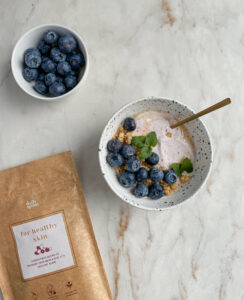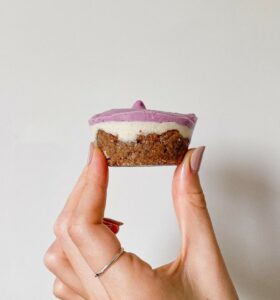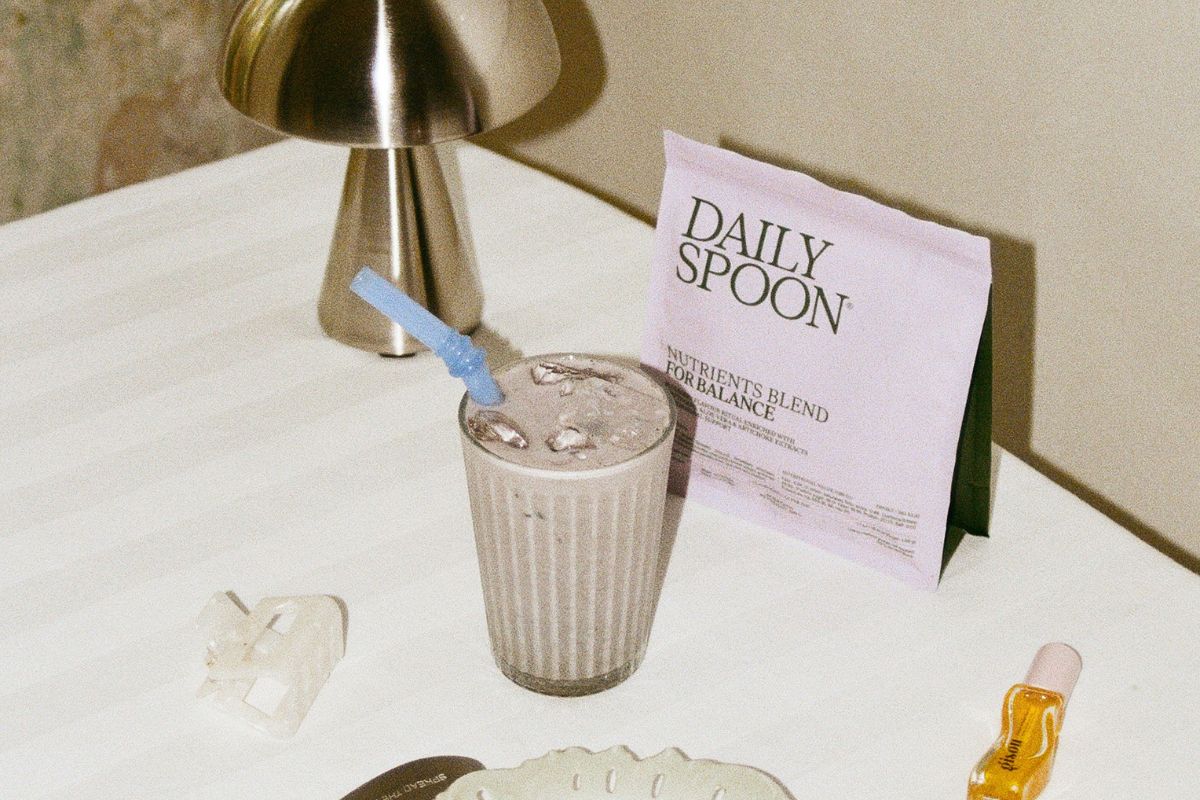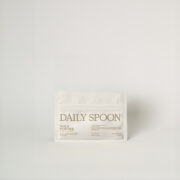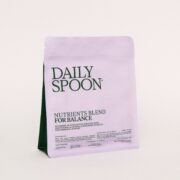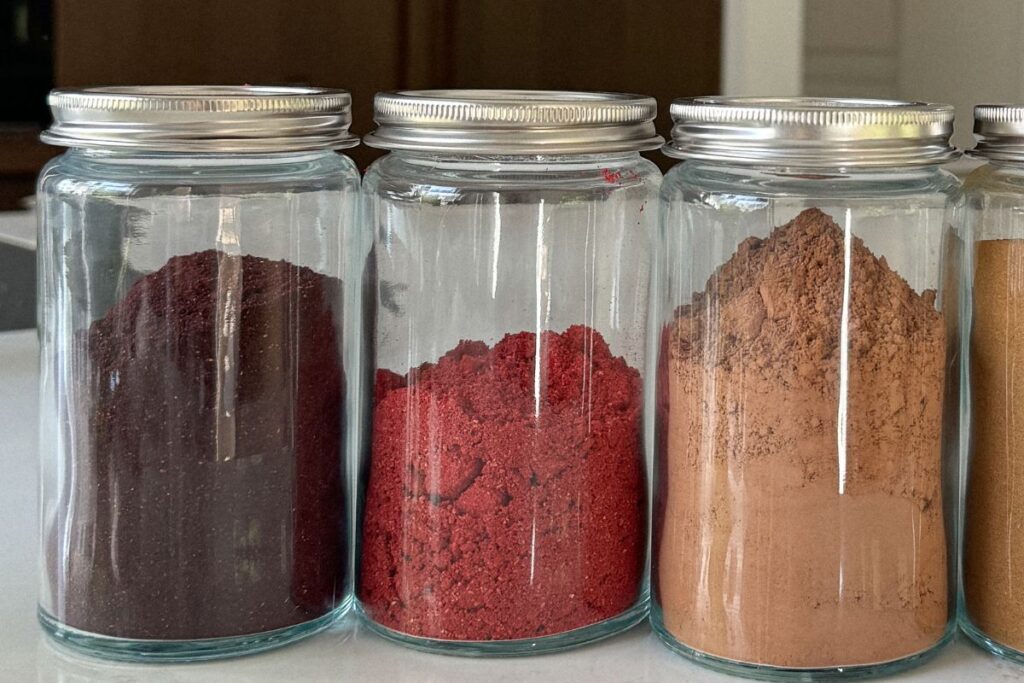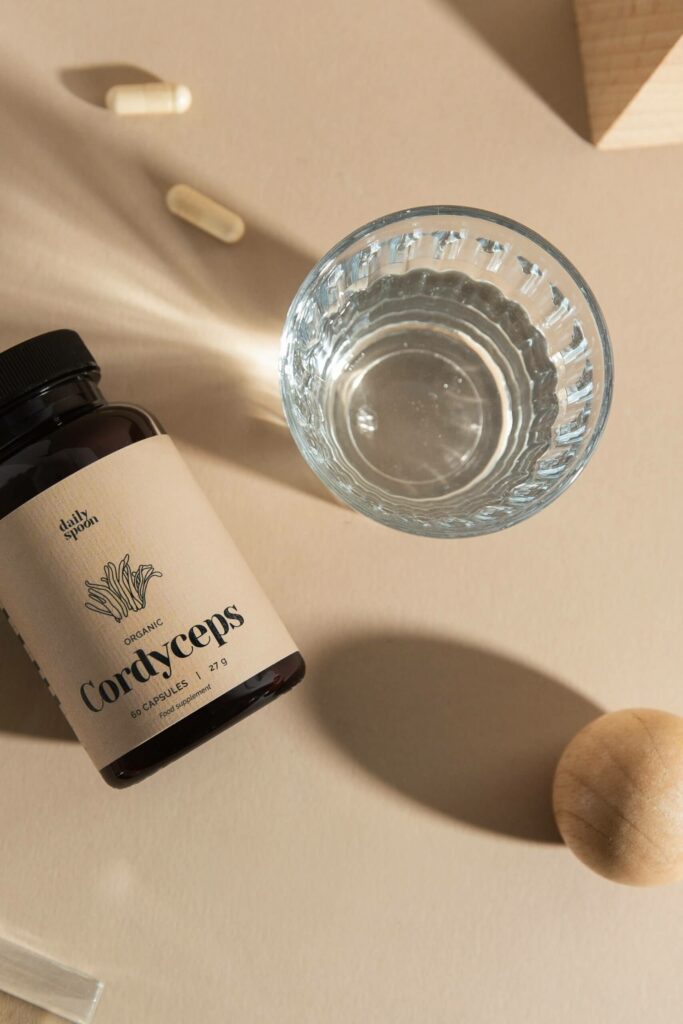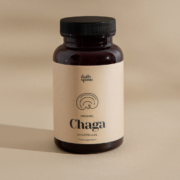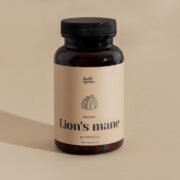To say that PMS symptoms are bothersome might be an understatement, especially for the 32% of women who experience moderate to severe symptoms. A large portion of women deal with PMS-related symptoms such as breast tenderness, cramping, fatigue, depression, irritability, bloating, and more. Fortunately, there are plenty of natural remedies that may help relieve these symptoms. If you’re looking for ways to naturally ease period pain and discomfort, start with light exercise like yoga and stretching, and avoid blood sugar spikes. Additionally, incorporating certain foods into your diet — ones that have been shown to help relieve PMS symptoms — can make a big difference.
Red Raspberry Leaf Tea
Red raspberry leaf tea is made from the leaves of raspberry plants. It has been used for centuries as a traditional remedy for digestive disorders, heart problems, fevers, diabetes, and vitamin deficiencies. Women also use it to help relieve PMS symptoms and to ease painful and heavy periods. Raspberry leaf tea is considered completely safe and can even be consumed during pregnancy.
It’s not entirely clear why raspberry leaf tea helps with PMS. One theory is that it contains antioxidants and helps relax blood vessels, as well as the muscles that contract during menstruation. If you grow raspberries at home, you can pick the leaves and use them fresh or dry them for winter use. Otherwise, raspberry leaf tea can be found in most grocery stores, health food shops, pharmacies, and online. It has a mild flavor and can be enjoyed hot or cold.
Flaxseeds
Flaxseeds are a nutritional powerhouse, rich in essential fatty acids and other nutrients. Just one tablespoon contains both omega-3 and omega-6 fatty acids. These essential fats are crucial for healthy development and bodily function, and since the body can’t produce them on its own, we need to get them from food. Flaxseeds have also been proven to significantly improve PMS symptoms.
It’s recommended to buy whole flaxseeds, as ground flaxseed spoils more quickly. Be sure to grind them before consuming, as whole flaxseeds pass through the digestive system without being properly absorbed. For the best results, add freshly ground flaxseed to your meals daily. Sprinkle them over oatmeal, yogurt, cottage cheese, applesauce, or salads. They’re also great in baked goods like muffins or banana bread, or blended into a morning smoothie.
Peruvian Maca
Maca is a root vegetable, similar in appearance to a turnip. Grown in the Andes Mountains of Peru, it has been used for centuries to boost energy and fertility in both humans and animals. Maca powder is highly nutritious, rich in natural vitamins and minerals such as vitamin B6, vitamin C, potassium, manganese, iron, and copper.
Maca has been shown to help balance hormones, which can significantly ease PMS symptoms. It’s also believed to relieve menopause discomfort and support fertility. The easiest way to add this superfood to your diet is by mixing the powder into smoothies, coffee, or tea. You can also add it to baked goods, desserts, and savory dishes. You can buy it here: Peruvian Maca.
Fighting Insomnia
Nothing keeps you up at night quite like the hormonal fluctuations that come with your period. Even worse, lack of sleep can make you more sensitive to pain — a vicious cycle. So how can you sleep better during PMS? The answer may be simple: eat melatonin-rich foods! In the dark, your body naturally produces melatonin, a hormone that helps regulate your sleep-wake cycle. Studies show that low melatonin levels can intensify PMS symptoms, especially insomnia. To naturally improve your sleep, eat more melatonin-rich fruits like cherries, pineapples, oranges, bananas, mangoes, apples, and kiwis.
For a Better Mood
Feeling a little irritable or anxious right before your period? PMS might be to blame. You may be able to fight it by increasing your intake of complex carbohydrates and omega-3 fatty acids. Complex carbs like oats, brown rice, sweet potatoes, and chickpeas are fantastic mood boosters. They’re packed with protein, B vitamins, magnesium, iron, calcium, and potassium — all essential nutrients for producing “feel-good” hormones. They also provide your brain with a steady stream of glucose, which helps maintain energy levels throughout the day and reduces cravings for sugary snacks. Omega-3 fatty acids — found in fish, nuts, seeds, plant oils, and soybeans — work similarly to antidepressants by giving your brain a healthy dose of serotonin (the “happiness” hormone).
How to Beat Bloating
Bloating can be extremely uncomfortable. It can make you feel nauseous, and even the thought of putting on jeans or tight clothes becomes unbearable. Sometimes it makes you want to spend the entire day curled up under a blanket. While eating might be the last thing on your mind during bloating, certain foods and drinks can actually help reduce it.
Step one is to avoid gas-producing foods such as peas, beans, dairy products, and fizzy drinks. For quick relief, try boiling ginger in water to make a hot tea — ginger is both anti-inflammatory and antispasmodic. Peppermint tea is another soothing option. Be mindful of your diet: asparagus and yogurt are rich in good bacteria that support digestion. Pineapple is also great for reducing bloating, thanks to bromelain, a digestive enzyme. If water retention is causing your bloating, add natural diuretics like celery and fennel to your meals to help flush out excess fluids.
Skin Breakouts
Hormonal fluctuations can wreak havoc on your skin, especially around the chin area. To reduce hormone-related breakouts, vitamin A can be a helpful ally. It supports the production of healthy skin cells, protects your face from infection, and helps it stay firm and clear. Vitamin A also slows down sebum production, so your pores are less likely to clog with dead skin cells and bacteria. Here are some foods rich in vitamin A: eggs, fatty fish, milk and yogurt, spinach, carrots, sweet potatoes, and red bell peppers.
When You’re Craving Sweets
Cravings for sugary snacks are common during PMS. To avoid this, try starting your day with a filling breakfast rich in protein and healthy fats. This will help keep you full longer and curb sugar cravings. Think eggs, nuts, oats, avocado, fish, and tofu. Once you’ve made yourself a delicious breakfast with these dream ingredients, you’ll never want to go back.
Relieving Headaches
PMS-related headaches often come from low estrogen levels. While you can’t fully control hormonal changes, you can manage menstrual migraines by including certain headache-fighting foods in your diet — especially those rich in magnesium. Magnesium deficiency can increase sensitivity to headaches, particularly during your period. Magnesium also helps reduce muscle spasms. Foods like beans, bananas, nuts, dark chocolate, and leafy greens are all excellent magnesium sources. Whether you snack on a handful of cashews or make a rich dessert with dark chocolate, your body will thank you.
Muscle Cramps
Often, we can’t pause our daily responsibilities just because we’re dealing with cramps and PMS pain. To make these tough moments more manageable, aim to follow a healthy diet regularly — especially before your period. All the foods mentioned above can help reduce menstrual pain. Dark chocolate in particular is comforting not just emotionally, but physically too — it’s high in magnesium, which naturally helps relax muscle cramps.


